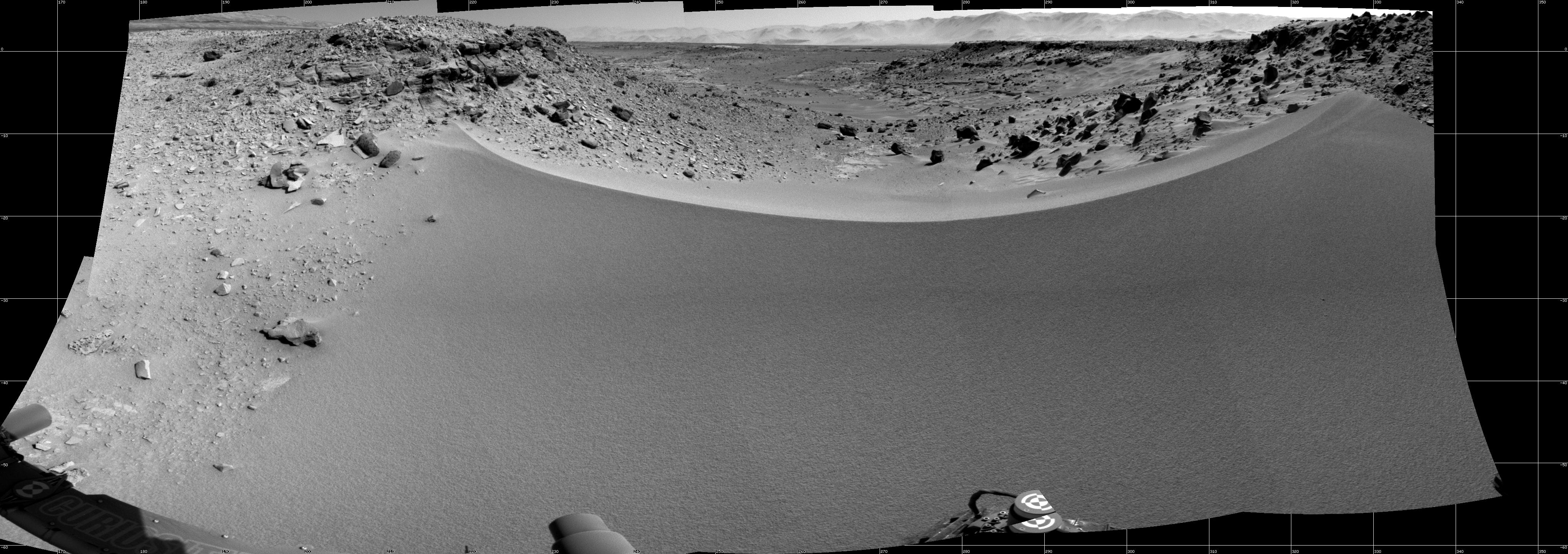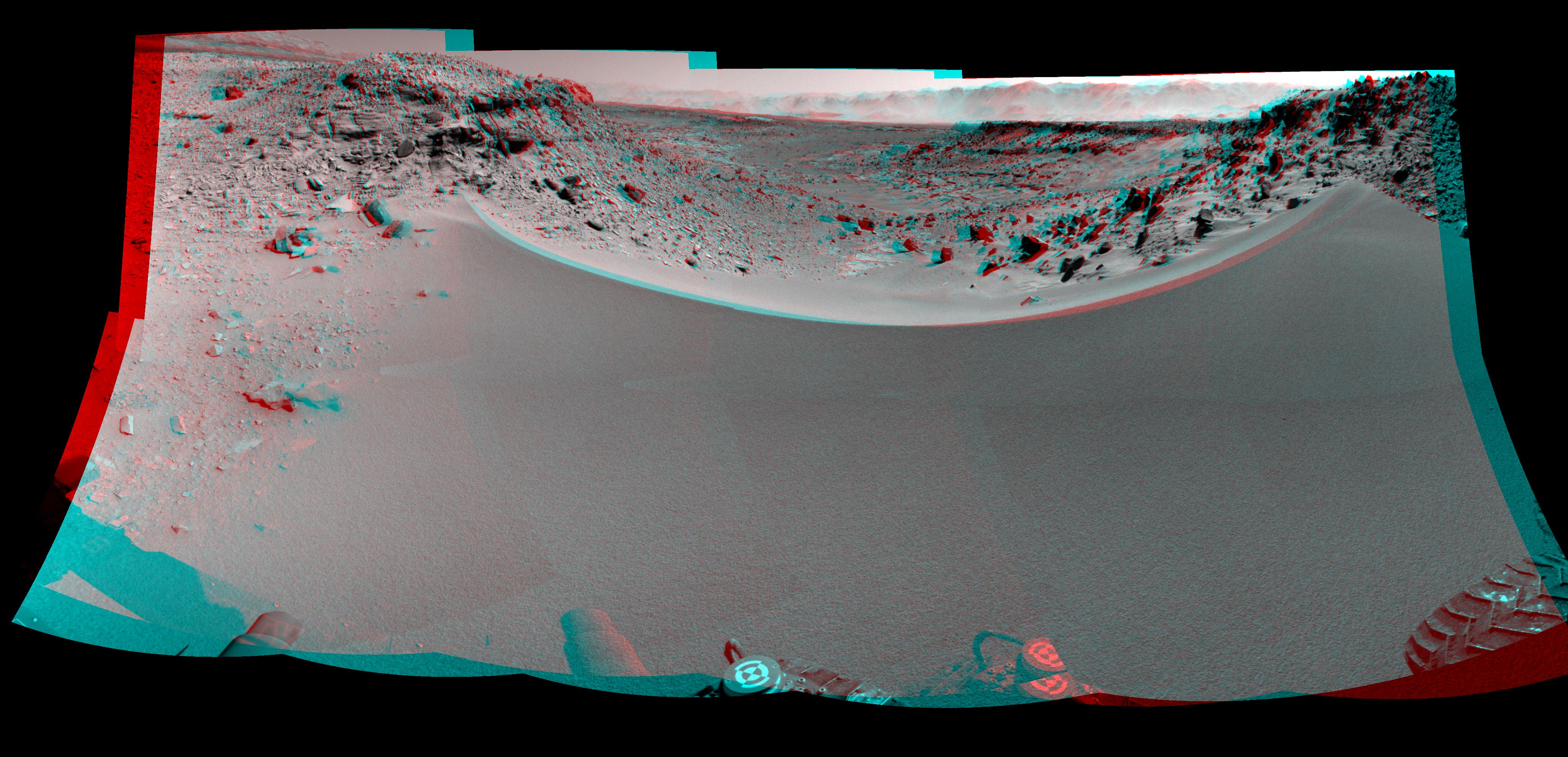
A new photo from NASA's Curiosity rover shows the car-sized robot at the lip of a small Martian sand dune, debating whether or not to drive over the obstacle on its way to a huge Red Planet mountain.
In the Mars views from Curiosity, a 3-foot-high (1 meter) dune separates the rover from a valley that may provide a relatively smooth route to the foothills of Mount Sharp, the rover's ultimate science destination. Curiosity's handlers are studying the new photo — a mosaic composed of images snapped on Jan. 30 — as they map out the 1-ton rover's next steps.
"The rover team is evaluating possible driving routes on the other side before [making] a decision [about] whether [to] cross the gap," NASA officials wrote in a description of the image. "The view covers a panorama from south, at the left edge, to north-northwest at the right edge. It is presented as a cylindrical projection."

The Curiosity team is seeking out more forgiving terrain for the rover, whose six wheels have accumulated an increasing amount of wear and tear over the last few months. The route beyond the sand dune, which spans a geological feature that mission scientists have dubbed "Dingo Gap," may give the wheels a bit of a break.
The Curiosity rover landed inside Mars' huge Gale Crater in August 2012 to determine if the Red Planet could ever have supported microbial life. Mission scientists have already found solid evidence of a habitable environment at a spot near Curiosity's landing site called Yellowknife Bay, but the rover's work is far from done.

The car-size robot is now on its way to the base of Mount Sharp, which rises more than 3 miles (5 kilometers) into the Martian sky from Gale Crater's center. The mission team wants Curiosity to climb up through the mountain's foothills, reading a history of the Red Planet's changing environmental conditions as it goes.
Curiosity left Yellowknife Bay for Mount Sharp last July, and it's expected to reach the mountain's base around the middle of this year, mission officials have said. The rover continues to do science work along the way, checking out rocks and other geological formations that look particularly interesting.
Get the Space.com Newsletter
Breaking space news, the latest updates on rocket launches, skywatching events and more!
Follow Mike Wall on Twitter @michaeldwall and Google+. Follow us @Spacedotcom, Facebook or Google+. Originally published on Space.com.
Join our Space Forums to keep talking space on the latest missions, night sky and more! And if you have a news tip, correction or comment, let us know at: community@space.com.

Michael Wall is a Senior Space Writer with Space.com and joined the team in 2010. He primarily covers exoplanets, spaceflight and military space, but has been known to dabble in the space art beat. His book about the search for alien life, "Out There," was published on Nov. 13, 2018. Before becoming a science writer, Michael worked as a herpetologist and wildlife biologist. He has a Ph.D. in evolutionary biology from the University of Sydney, Australia, a bachelor's degree from the University of Arizona, and a graduate certificate in science writing from the University of California, Santa Cruz. To find out what his latest project is, you can follow Michael on Twitter.









